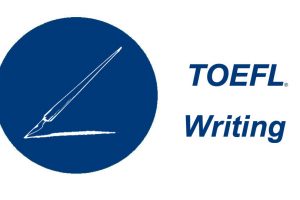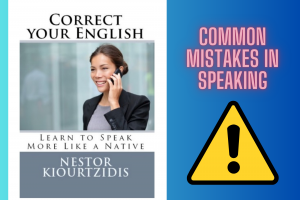4 ساختار گرامری که برای بهتر شدن نمره آیلتس باید بدانید!

4 ساختار گرامری که برای بهتر شدن نمره آیلتس باید بدانید!
4 ساختار گرامری که برای بهتر شدن نمره آیلتس باید بدانید!
1.
The Passive Voice
The passive voice can be used whenever you want to sound more formal and impersonal.
You form the passive voice by using the verb “to be” in the tense you want, plus the past participle (the third form of the verb; for example, for the verb “write” you would use “written”).
Examples:
Almost 50% more courses were chosen in the second semester as compared to the first one. (the passive voice is used here, with the past tense of the verb “to be” and the past participle of the verb “choose”).
More research needs to be done before choosing a certain supplier. (“do” is used in the passive voice in the infinitive, with the verb “be” used in the infinitive and the past participle of the verb “do”).
2.
Modal Verbs
You can use modal verbs when you want to express different nuances like degrees of certainty.
- Could, might and may are modal verbs and can be used to refer to possible but uncertain actions in the future, with might being slightly less certain than may.
Examples:
We could be late if we stop for drinks now.
I may want to spend my holiday in Europe, but everything depends on my partner.
We might want to move to a different class if the problem persists.
- Could have, might have and may have are used to express possible actions in the present or past—you are suggesting that these actions are or were possible, or that they are or were completed.
Examples:
They could have left hours ago.
It’s almost midnight in Spain, the plane might have landed by now.
I may have mentioned your name to my colleague.
- Can is used to make general possible statements about the present, while could is used as the past of can with this meaning.
Examples:
My boss can be very demanding at times.
Students can be difficult to motivate in evening classes.
My boss could be very demanding when I first got hired.
Students could be difficult to motivate when I was an inexperienced teacher.
- Can’t (cannot) is used to express impossibility.
Example:
These conclusions can’t be right.
- Must is used when we are sure something is true and must have is used with the same meaning for the past.
Examples:
There must be a better explanation for why they haven’t arrived yet.
They must have changed their marketing strategy to afford such good prices.
3.
The Definite Article
The definite article (the), as the name suggests, is used for talking about people or things that are known to the speaker, already mentioned earlier, described in some detail or unique.
Examples:
Can you turn the TV on? (The speaker knows which TV they are talking about.)
We are not going by car. The car is not big enough for all of us. (The car has already been mentioned, so we know what car the speaker is referring to.)
The gift they brought was a bit inappropriate. (We know what gift the speaker is talking about.)
I can’t open the door, as I don’t have the key. (The key is unique.)
- The can also be used with superlatives, ordinal numbers, countries that have plurals in them or that include the words “republic” or “kingdom.”
Examples:
This is the best movie I’ve seen in a while. (superlative)
This is the second time I’ve met him today. (ordinal number)
The Czech Republic is one of my favorite country in Europe. (country that includes the word “republic”)
4.
Comparing Adjectives
You should use adjectives as often as you can to describe people or things because they prove you have a wide range of vocabulary in speaking and writing. You may need to compare them using comparatives or superlatives, depending on what you are trying to say. There are a few rules you need to keep in mind:
- Most one syllable adjectives take -er and -est at the end to form the comparative and the superlative.
Examples:
My plan is safer than yours.
This is the safest plan of them all.
- Two-syllable adjectives can form the comparative and superlative either by adding -er and -est or by using more and the most. In most cases, both forms can be used.
Examples:
This is a simpler version of what I’ve just said.
I’ve never lifted a heavier bag.
This is the narrowest path I’ve ever walked on.
His was the most complete answer I got.
- Adjectives of three or more syllables use more and the most to form the comparative and the superlative.
Examples:
I’ve never heard a more beautiful song.
This is the most interesting story I’ve ever read.
Pay special attention to irregular adjectives that don’t follow the rules above:
good ⇒ better ⇒ the best
bad ⇒ worse ⇒ the worst
far ⇒ farther ⇒ the farthest
little ⇒ less ⇒ least
In the IELTS exam you may want to use adjectives to prove your wide range of vocabulary, but pay attention to spelling while taking the writing test.
- Adjectives ending in consonant + y: The y changes to an i when adding -er or -est.
Examples:
Shiny ⇒ shinier ⇒ shiniest
Icy ⇒ icier ⇒ iciest
- Adjectives ending in e: The e is dropped when adding -er or -est.
Examples:
Polite ⇒ politer ⇒ politest
Gentle ⇒ gentler ⇒ gentlest
- Adjectives ending in a consonant with a single vowel preceding it, double the consonant when adding -er or -est.
Examples:
Big ⇒ bigger ⇒ biggest
Red ⇒ redder ⇒ reddest
Sad ⇒ sadder ⇒ saddest
مطالب مرتبط:
رایتینگ آیلتس : بیان نظر شخصی در تسک دوم رایتینگ آیلتس



